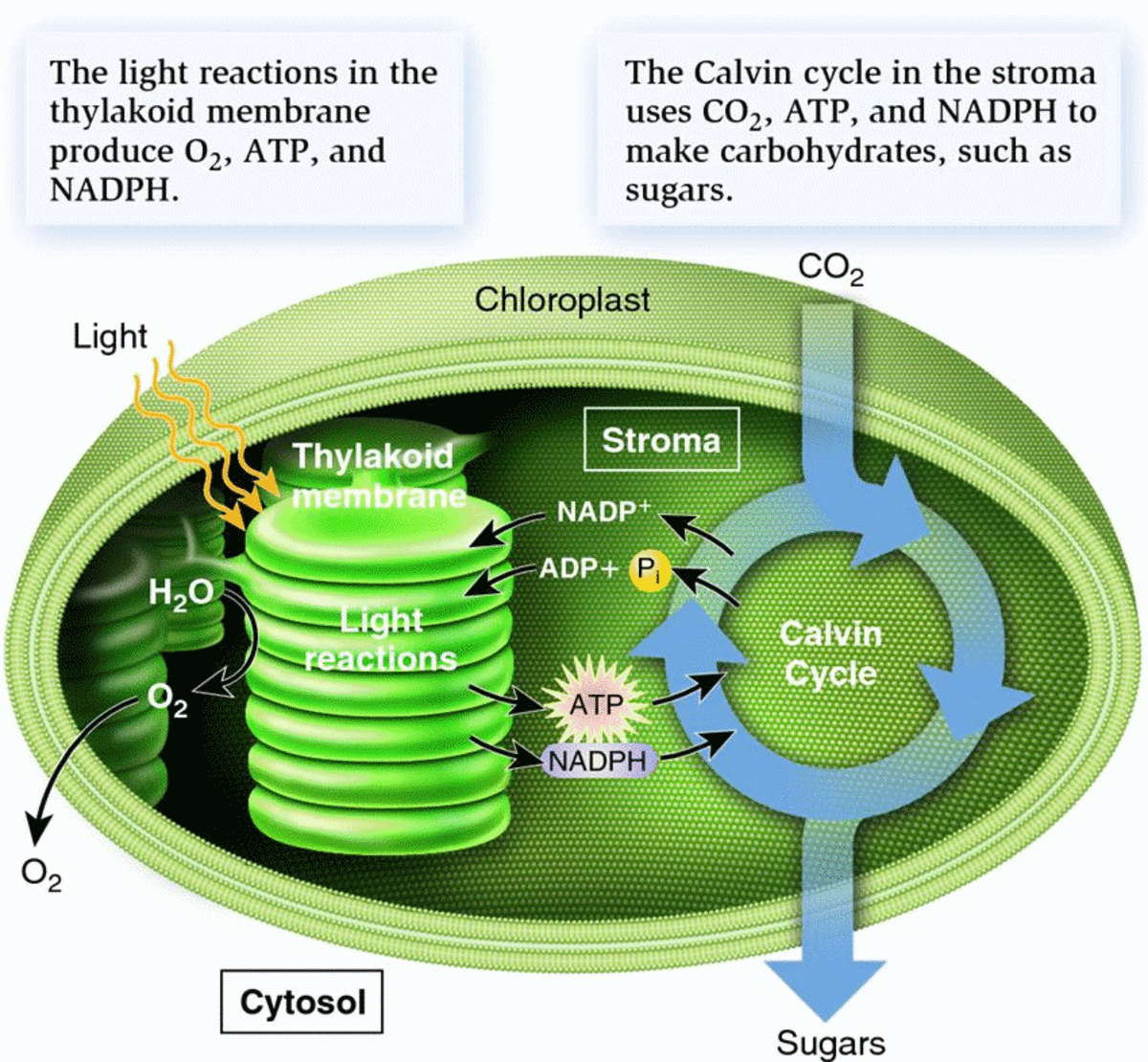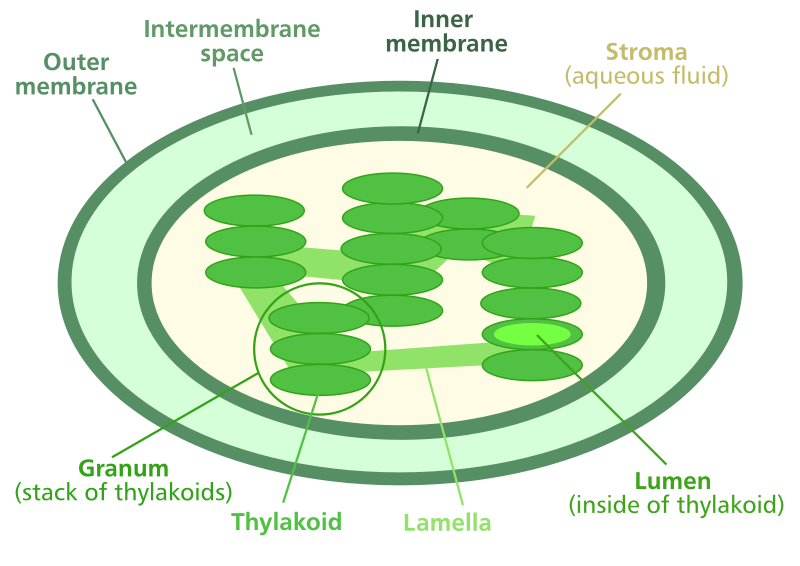What does stroma do for photosynthesis sets the stage for this exploration, revealing the intricate workings of this vital process within the chloroplast. Imagine a bustling factory where energy is captured and transformed into the building blocks of life, and the stroma is the heart of this operation. This fluid-filled space, teeming with enzymes, plays a crucial role in the Calvin cycle, the very process that converts carbon dioxide into sugars.
The stroma’s role goes beyond simply hosting the Calvin cycle. It interacts with the thylakoid membrane, receiving the energy generated during the light-dependent reactions. This intricate interplay ensures a smooth flow of energy and resources, ultimately driving the production of sugars that fuel the plant’s growth.
Introduction to Stroma: What Does Stroma Do For Photosynthesis
The stroma is a dense fluid that fills the space within the chloroplast, the organelle responsible for photosynthesis in plant cells. It is a dynamic environment teeming with enzymes, proteins, and other molecules essential for the intricate process of converting light energy into chemical energy.The stroma is the site of the Calvin cycle, a crucial part of photosynthesis where carbon dioxide is converted into glucose, the primary energy source for plants.
This cycle relies on the presence of various enzymes within the stroma, which catalyze the chemical reactions involved in sugar production.
Stroma Structure and Composition
The stroma is a gel-like matrix that comprises a complex mixture of molecules, including enzymes, proteins, and various organic and inorganic compounds. Its fluid nature allows for the movement of molecules and facilitates the biochemical reactions of the Calvin cycle.The stroma is rich in enzymes, which are proteins that act as catalysts, speeding up chemical reactions without being consumed in the process.
These enzymes play a critical role in the Calvin cycle, converting carbon dioxide into glucose.
- Enzymes: The stroma contains numerous enzymes, such as RuBisCO, which catalyzes the first step in the Calvin cycle, and phosphoglycerate kinase, which converts 3-phosphoglycerate to 1,3-bisphosphoglycerate.
- Proteins: The stroma also contains proteins involved in various cellular processes, including photosynthesis, DNA replication, and protein synthesis.
- Organic Compounds: The stroma contains various organic compounds, including sugars, amino acids, and lipids. These compounds serve as building blocks for the synthesis of other molecules.
- Inorganic Compounds: The stroma also contains inorganic compounds, such as magnesium, iron, and manganese. These compounds are essential for the activity of certain enzymes involved in photosynthesis.
Stroma’s Role in the Calvin Cycle

The Calvin cycle, also known as the light-independent reactions, is a crucial part of photosynthesis. It takes place in the stroma, the fluid-filled space within chloroplasts, and utilizes the energy stored in ATP and NADPH produced during the light-dependent reactions to convert carbon dioxide into sugar.The stroma provides an ideal environment for the Calvin cycle to occur, providing the necessary enzymes and energy carriers.
It contains a high concentration of enzymes that catalyze the various reactions of the Calvin cycle, ensuring that the process proceeds efficiently.
The Calvin Cycle: A Detailed Look
The Calvin cycle can be divided into three main stages: carbon fixation, reduction, and regeneration.
- Carbon Fixation: In this stage, carbon dioxide from the atmosphere is incorporated into an organic molecule, ribulose bisphosphate (RuBP), a five-carbon sugar. This reaction is catalyzed by the enzyme RuBisCo, which is abundant in the stroma. The product of this reaction is an unstable six-carbon molecule that quickly breaks down into two molecules of 3-phosphoglycerate (3-PGA), a three-carbon compound.
- Reduction: The 3-PGA molecules are then reduced using energy from ATP and NADPH, produced during the light-dependent reactions. This reduction step involves the addition of electrons and hydrogen ions, converting 3-PGA into glyceraldehyde 3-phosphate (G3P), a three-carbon sugar.
- Regeneration: Most of the G3P molecules are used to regenerate RuBP, ensuring the continuation of the cycle. This regeneration requires energy from ATP and involves a series of complex enzymatic reactions. However, some G3P molecules are removed from the cycle and used to synthesize glucose, the primary product of photosynthesis.
Stroma’s Interactions with Other Chloroplast Components

The stroma, a semi-liquid matrix within the chloroplast, is not isolated but intricately connected with the thylakoid membrane, the site of light-dependent reactions in photosynthesis. This interconnectedness facilitates the transfer of energy and regulatory signals, ensuring a coordinated and efficient photosynthetic process.
Stroma and Thylakoid Membrane Interdependence, What does stroma do for photosynthesis
The stroma and thylakoid membrane are functionally interdependent. The thylakoid membrane encloses the thylakoid lumen, where light-dependent reactions occur, producing ATP and NADPH. These energy carriers are then transported to the stroma, where they are utilized in the Calvin cycle, the light-independent reactions, to fix carbon dioxide into glucose.The thylakoid membrane also plays a crucial role in regulating the pH of the stroma.
The pumping of protons (H+) from the stroma into the thylakoid lumen during the light-dependent reactions creates a proton gradient, which drives ATP synthesis. This proton gradient also influences the activity of enzymes in the stroma, further demonstrating the interdependence of these two chloroplast components.
Energy Transfer from Thylakoid Membrane to Stroma
The energy produced during the light-dependent reactions in the thylakoid membrane is transferred to the stroma via the movement of electrons and protons. The light energy absorbed by chlorophyll molecules in the thylakoid membrane excites electrons, which are then passed along an electron transport chain. This electron transport chain generates a proton gradient across the thylakoid membrane, driving the synthesis of ATP.
The ATP, along with NADPH, is then transported to the stroma, where they are utilized by the enzymes of the Calvin cycle. The Calvin cycle uses the energy from ATP and NADPH to fix carbon dioxide into glucose, the primary product of photosynthesis.
Stroma’s Role in Photosynthesis Regulation
The stroma plays a vital role in regulating the overall rate of photosynthesis. It does so by controlling the activity of enzymes involved in both the light-dependent and light-independent reactions. For instance, the activity of Rubisco, the key enzyme of the Calvin cycle, is influenced by the concentration of CO2, Mg2+, and other factors within the stroma.The stroma also regulates the transport of metabolites between different compartments within the chloroplast.
For example, the transport of sugars produced during the Calvin cycle from the stroma to the cytoplasm for utilization by other cellular processes is carefully regulated. This ensures that the chloroplast efficiently utilizes the products of photosynthesis while maintaining a balance of resources for other cellular functions.
Stroma’s Importance in Photosynthesis

The stroma, a gel-like matrix within chloroplasts, plays a crucial role in photosynthesis, serving as the site for the Calvin cycle, a series of reactions that convert carbon dioxide into sugar. Its importance extends beyond this, contributing significantly to the overall efficiency and success of the photosynthetic process.
Stroma’s Contribution to Carbon Fixation and Sugar Production
The stroma’s primary function is to facilitate the Calvin cycle, a complex series of reactions that fix carbon dioxide from the atmosphere into organic compounds. This process, also known as carbon fixation, is the foundation of photosynthesis, as it allows plants to capture energy from sunlight and convert it into usable chemical energy in the form of sugars. The stroma provides the necessary environment for the Calvin cycle to occur, providing enzymes, substrates, and a suitable pH for the reactions to proceed efficiently.
The Calvin cycle, occurring within the stroma, is a cyclical series of reactions that convert carbon dioxide into glucose, a vital source of energy for plants.
The stroma also houses the enzyme RuBisCo, a crucial component of the Calvin cycle responsible for catalyzing the initial step of carbon fixation. This enzyme binds carbon dioxide to a five-carbon sugar, ribulose bisphosphate (RuBP), initiating a chain of reactions that ultimately produce glucose.
Stroma’s Interaction with Other Chloroplast Components
The stroma works in close coordination with other chloroplast components, including the thylakoid membrane, to ensure the efficient production of sugars. The thylakoid membrane houses the photosystems, which capture light energy and convert it into chemical energy in the form of ATP and NADPH. These energy carriers are then transported to the stroma, where they are used to power the Calvin cycle.
The stroma receives energy from the thylakoid membrane, in the form of ATP and NADPH, to drive the Calvin cycle and produce sugars.
Stroma’s Key Functions in Photosynthesis
The following table summarizes the key functions of the stroma in photosynthesis:| Function | Description ||—|—|| Site of the Calvin cycle | The stroma provides the environment for the Calvin cycle, a series of reactions that convert carbon dioxide into glucose. || Contains RuBisCo | RuBisCo, a key enzyme in the Calvin cycle, is found in the stroma. || Receives energy from the thylakoid membrane | The stroma receives ATP and NADPH, produced by the thylakoid membrane, to power the Calvin cycle.
|| Provides a suitable environment for the Calvin cycle | The stroma maintains a specific pH and provides necessary enzymes and substrates for the Calvin cycle to occur efficiently. |
The stroma’s contribution to photosynthesis is truly remarkable. It’s the dynamic hub where carbon dioxide is captured and transformed into the sugars that sustain life. Understanding the stroma’s role in this process is key to appreciating the complexity and elegance of plant life. From the intricate dance of enzymes to the delicate transfer of energy, the stroma stands as a testament to the remarkable efficiency of nature.
Helpful Answers
Where is the stroma located?
The stroma is located within the chloroplast, specifically in the space between the thylakoid membrane and the outer membrane of the chloroplast.
What are the main enzymes found in the stroma?
The stroma contains a variety of enzymes, including Rubisco, which is crucial for carbon fixation in the Calvin cycle, as well as other enzymes involved in the synthesis of sugars and other molecules.
What is the difference between the stroma and the thylakoid lumen?
The stroma is the fluid-filled space within the chloroplast, while the thylakoid lumen is the space inside the thylakoid membranes. The thylakoid lumen is where the light-dependent reactions of photosynthesis take place, while the stroma is where the Calvin cycle occurs.






